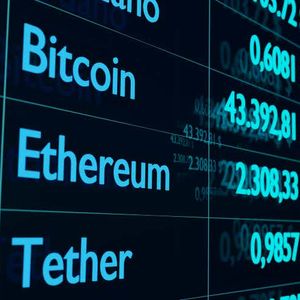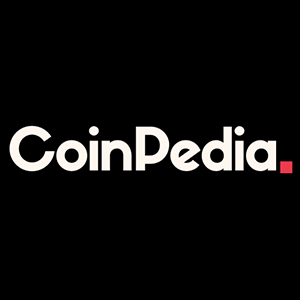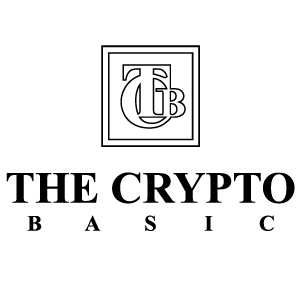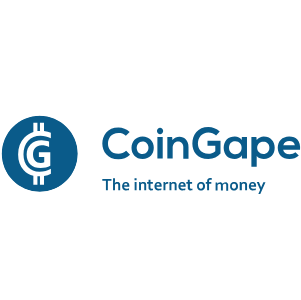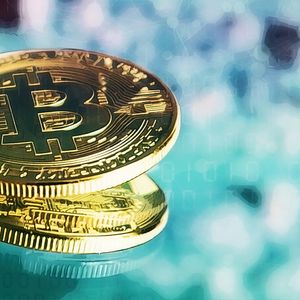Summary Ethereum is a decentralized platform for smart contracts and dApps, expanding its use case beyond simple payments. The recent upgrade, Dencun, significantly reduced gas fees on the Ethereum network, leading to a bullish trend. Bullish trends for Ethereum include the rise of DeFi and increased institutional adoption, with significant assets held in DeFi protocols. "The Ethereum Machine" has outpaced ETH's price in recent months and is giving investors a current buying opportunity. Introduction Since its inception in 2015, Ethereum ( ETH-USD ) has emerged as the most powerful contender to Bitcoin, securing the position of second-largest cryptocurrency in the world. Recently, Ethereum has been upgraded and is showing improvements, yet the price has recently fallen from 6-month highs. Data by YCharts Ethereum's all-time chart still looks monstrous, for reference. We are not only below those 6-month highs by a fair bit, but we are also still far below the 2022 highs. Data by YCharts We have a long way to go too if ETH is to return to those dizzying highs back in 2022. Data by YCharts ETH is not just a cryptocurrency; it is a decentralized platform that helps developers build and deploy smart contracts and decentralized applications ("dApps"). This makes Ethereum different than what most people think of as a currency, and expands its use case beyond simple payment transactions. There is a "dApp" for everything, and the largest names are all financial services and marketplaces. I say "largest names," but that's relative to cryptocurrency. There are no decentralized banks with a reputation the size of Bank of America ( BAC ). Very famously, most of the dApps that allow individuals to own and trade NFTs are also hosted on the Ethereum network. Figure 1 (Glowid IT) The Last Upgrade Was a Success Vitalik Buterin, one of the key developers and the face of Ethereum, published this roadmap earlier this year to his X account, showing the trajectory for Ethereum moving forward. Note that it is a little technical, so don't dwell on it too much if you're missing some context. The point here is that active development is still ongoing and the founder is still very actively involved in the project. Figure 2 (Vitalik Buterin) Back in March, we began "The Surge" part of Vitalik's plan, with a new upgrade to the network, Cancun-Deneb ("Dencun"). That update launched this new phase, and Ethereum has been fairly flat since, with an almost 10% decline since then. Although in classic cryptocurrency fashion, ETH has been to +12% and -12% in that same timeframe. Data by YCharts Gas Fees are Down Dencun was supposed to fix one of the core problems with Ethereum, its use expenses, colloquially known as "gas." It worked wonders, with ETH's gas fees now down 88% since Dencun's launch. Data by YCharts We've seen the gas prices fall, even when the average transaction volume stays the same. This is a very good sign for the network. Data by YCharts Over the last few months, we've seen a de-coupling of the correlation between these two figures, which is a very bullish sign to me. One of the major issues with cryptocurrency adoption is dynamic, high usage fees. Addressing this, and keeping fees depressed even during periods of extremely high usage, will be a massive boon for Ethereum that will help drive broader adoption. Data by YCharts Gas may be leaving all together for some transactions, with news about gas-free stablecoin transactions coming to the Ethereum chain later this year to challenge centralized systems like PayPal Holdings, Inc. ( PYPL ) PayPal USD ( PYUSD-USD ) and Coinbase Global, Inc. ( COIN )'s agreement with Circle to have fee-less USDC ( USDC-USD ) transfers. This would be a huge boon for Ethereum, as one of the factors that majorly hinders adoption is the associated fees with making transfers and payments. The Market Disagrees With Me on Dencun Since Dencun, the price has actually fallen. Data by YCharts I believe there are several reasons for this. The most major is that Ethereum's market share was eroded by the rise of other competing currencies like Solana ( SOL-USD ), which is being billed by some analysts as an "Ethereum Killer" . In the same timeframe, since Dencun's launch, SOL has remained positive and outperformed Ethereum at every step. Data by YCharts SOL, however, is entering overvalued territory compared to Ethereum, as it has also outperformed Bitcoin and the broader market in this timeframe. Its outperformance is part of a broader correction in SOL since the FTX collapse , where SOL was particularly impacted as the fall of FTX took down one of its largest dApps. Be wary of currencies marked as "Ethereum killers" like SOL. In the last ten years of following the crypto industry, I've learned not to trust any cryptocurrency given that title. It's a curse. Data by YCharts DeFi Continues to Grow and Dominate DeFi is the platform fulfilling one of cryptocurrency's greatest promises: banking the unbanked. DeFi is designed to provide financial services over the blockchain. This allows anonymous usage of these services, as well as a way to curtail governmental or centralized power over finance. How well that actually works is a story for another article. For now, all that's important is that we see how large some of these institutions are and how fast they are growing. There are currently six DeFi protocols with over $30B in assets built on the Ethereum network, with the largest, Synthetix, having over $370B in assets . Of those, $205M are locked in contracts and are not liquid. Protocols like Balancer ( BAL-USD ), which is used to facilitate market making in currency pairs (i.e. currency exchanged called "liquidity pools"), churned through a volume of $80B in the last 30 days . To be clear, Synthetix has a larger amount of deposits than Goldman Sachs Bank ( GS ), which sits at $363B as of the end of March . Note: this comparison is a little unfair as Synthetix's AUM is calculated using all assets, including speculative assets, whereas Goldman's AUM is just cash deposits and does not include the investments they manage. The largest decentralized exchange by number of active users, Uniswap V3, transacts about $2B Ethereum every day across tens of thousands of users. Figure 2 (DappRadar) This is a major selling point for Ethereum, as it shows just how important DeFi is to its ecosystem and how much money actually flows through it. Its 30 day dApp volume exceeded ten times that of the next-closest "layer one" ("L1") cryptocurrencies. We can also see how far and away ETH is when it comes to NFT volume and number of contracts (i.e. variety of services) when compared to other major cryptocurrencies like BNB ( BNB-USD ) and Solana ((SOL-USD)). Figure 3 (DappRadar) What's Next? "The Merge" happened in 2022, which was when Ethereum changed their protocol from proof-of-work (the way Bitcoin validates blocks) to proof-of-stake, which was supposed to lower the energy input required to run the Ethereum Virtual Machine and make the entire system cheaper, while rewarding those who held very large amounts of Ethereum rather than those who controlled the most computing power. This was supposed to be a very positive catalyst for Ethereum, and while I believe this move was good for the whole network, this has shifted the ETH/BTC ratio down, and as the down shaded areas show, BTC has outperformed since. Figure 4 (Glassnode) But as we've seen in the past, following BTC outperformance is typically periods of Ethereum outperformance (and they are typically longer). This could come from several other catalysts that I believe investors should watch out for and could very positively impact Ethereum's price and help it catch back up again, back to the pre-merge ratio with BTC. Spot ETFs for Ethereum are in the works, with Fidelity already having launched a fund in Canadian markets, the Fidelity Advantage Ether ETF ( FETH:CA ) and filing to launch one in the US back in May This was a very positive catalyst for Bitcoin, which outperformed Ethereum since its spot ETFs launched Many speculators may see these spot Ether ETFs as a proxy for investing in Web3 without idiosyncratic company risk Ethereum was recently given tacit government approval when the SEC closed its investigation without filing any charges last month This has established the current legal status of Ethereum. Its status as a security is still contested, which is a positive catalyst for the stock moving forward as it means that the SEC might stay more hands-off It is to note that the SEC uses the controversial Howey Test for determining what is and is not a security, and they have not ruled definitively on Ethereum New upgrades still being added and utilized by dApps such as the recently-added restaking, which allows smaller blockchains to utilize the Ethereum Virtual Machine and leverage its power (while having to buy Ether to use as gas for this operation to work) This is a positive catalyst moving forward as this is still very new and under-utilized by the broader cryptocurrency market currently and could cause a lot of buying of Ether once services that streamline the process for smaller chains are able to scale, such as EigenLayer Market sentiment has recently trended toward non-Layer 2 solutions like Solana ((SOL-USD)), but these currencies are now entering overvalued territory. Despite their outperformance, they were not able to capture equivalent market share of smart contracts usage despite their price rises Suitability I've presented a bull case for Ethereum, banking on the fact that it is at a relative low in price compared to previous highs, despite its performance and usability having much improved since those highs. However, this does not necessarily mean that investors should be leaping into ETH head first. All cryptocurrencies are incredibly volatile, or at least have the potential to be, and black swans that could cause systemic shocks and shatters in the cryptocurrency community could go totally unnoticed in the rest of the investing world. It's important for investors to remember that their allocations to cryptocurrencies should be very small and purely speculative. I believe that traders and speculators should limit their total exposure to cryptocurrencies to 5% and under. Risk-seeking investors should consider a 1-2% allocation. Conservative and risk-adverse investors should not invest in any cryptocurrencies. Conclusion Ethereum is set to, despite its 35% YTD performance, potentially run back toward its previous highs so long as the current market euphoria continues. Its own fundamentals have improved, and its usability is better compared to 2022 and its older versions. Now that the system has improved and more money is flowing through it, I believe that Ethereum still has room to go. That being said, beware of volatility and speculate wisely. I would not recommend locking up your cryptocurrency with third-party exchanges outside of publicly traded Coinbase ((COIN)). I also would not recommend interacting with any of the protocols I mentioned in this article unless you have a robust understanding of cryptocurrencies beyond investments. I am considering an allocation to Ethereum, likely through an exchange or my own custodianship, while I wait for Fidelity (my primary broker) to release its spot Ethereum ETF . Thanks for reading.
